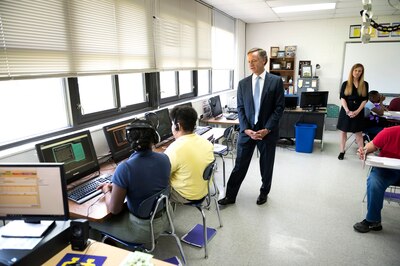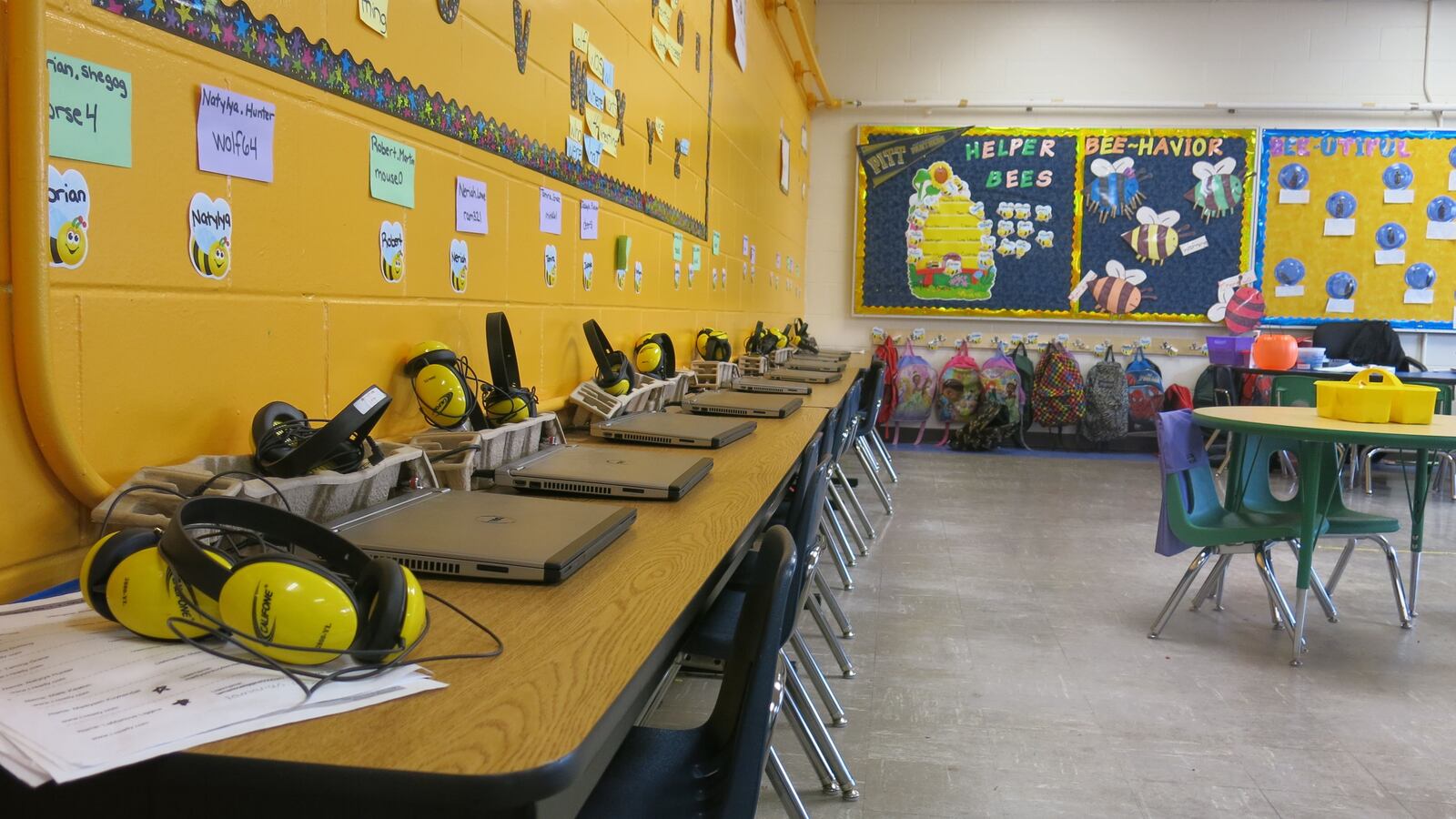With only 70 computers in the building for 400 students at one Memphis high school, preparing for Tennessee’s online test last year was mostly limited to learning the material — not developing keyboarding and digital skills.
A shipment of 90 laptops arrived a week before TNReady testing began, but students were still at a disadvantage when they finally logged on to show what they had learned in math, English and other courses at Memphis Academy of Health Sciences.
“Our students were just not digitally savvy, and all of the state’s online problems didn’t help. It really affected our scores,” recalls Reginald Williams, former principal of the Memphis charter school, which serves students who are mostly from low-income families.
Expanding computer access for Tennessee students is at the heart of a new program announced Wednesday by Gov. Bill Haslam in the push to troubleshoot simmering problems under TNReady, the state assessment entering its fourth year.
Under TNSTEP — which stands for the Tennessee Student Technology Enrichment Program — the state will build a pool of companies to sell or lease high-quality computer devices to districts at competitive rates.
The model could reduce the cost of purchasing and maintaining devices by as much as 40 percent, according to the governor’s office.
Only about a third of the state’s 147 school districts now have enough technology to provide each student with a device for both instruction and testing, compared with about 40 percent nationally.
The disparities were cited frequently during Haslam’s recent statewide “listening tour” of educators to discuss problems with TNReady, including the challenge of rescheduling many of last year’s tests due to a myriad of technical problems.
“It’s no surprise that districts that had more technology had fewer problems,” Haslam said during a 40-minute discussion with reporters about TNReady. “So if you were one-to-one and had one piece of technology for every student, those districts tended to have a lot less issues and didn’t have as many scheduling issues.”
TNSTEP is designed to help school systems expand their inventories. “The upfront cost is what kills a lot of districts,” the governor said.
Switching to computer testing was a big part of the plan in 2016 when Tennessee rolled out TNReady, which also was designed to increase the rigor of the state’s assessment and align the questions with new academic standards.
But while Haslam invested $50 million to help expand internet access and beef up digital infrastructures, school systems have been mostly on their own to purchase computers, laptops, tablets, or other devices for testing and instructional purposes.

“It’s a true equity issue,” said Joan Gray, executive director of Tennessee Educational Technology Association, which represents school technology leaders and workers across the state.
“It really comes down to where you live and where you go to school. Some districts have more funding and are way ahead of the curve. Others, especially in bigger cities like Memphis and Nashville, have a lot more students and don’t have enough devices.”
“It tugs at my heart — and it should all of us,” Gray added.
She hopes the new program can help to address the gaps.
“I know the governor doesn’t have a billion dollars to put into buying new devices, but the state certainly has more buying power and should be able to get a better price,” she said. “At the same time, the details and specs for those devices should be looked at closely. I hope school system technology people are part of the discussion. They’re the ones who will have to work with these.”
Making sure that the devices are of high quality is one concern, according to Gray.
School districts also must get approval for lease agreements from both their local funding bodies and state auditors. “That’s a lot of hoops to jump through,” she added.
But no matter the challenges, spotlighting the need is a good first step, according to Dale Lynch, executive director of the state superintendents association.
“We’ve got to get better — and not just for testing,” Lynch said. “We need more technology to help students learn and improve all year long. If those devices also help with assessment and accountability, that’s great too.”

